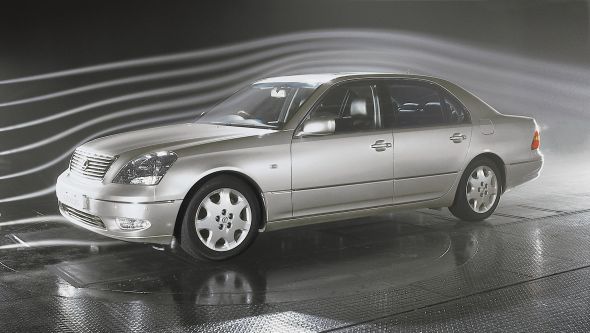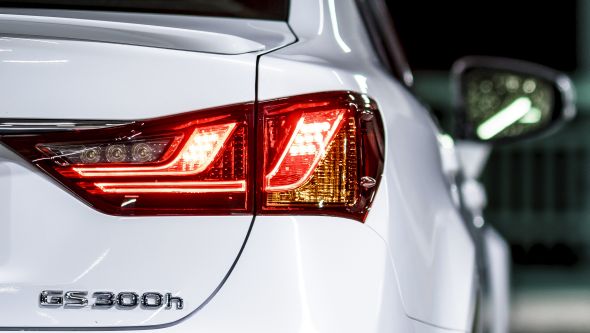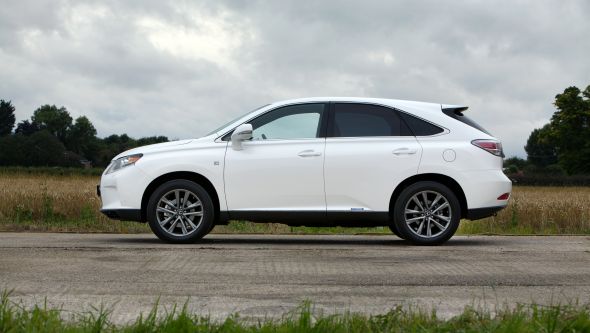
Recent recounting of the pioneering innovations Lexus developed for its first-, second-, third- and fourth-generation flagship LS models shows how important aerodynamic efficiency is when delivering a quiet ride, better fuel efficiency and good high-speed stability.
Among these, the LS 430 was well-known for being aerodynamically honed in the same ‘quiet’ wind tunnel used for the development of the Shinkansen, or Bullet Train, that operates throughout Japan (see image above). It was also the first Lexus model to employ significant ground effect measures across the floor pan, such as a flat cover under the engine, and fairings around the fuel tank, rear suspension, exhaust system and rear bumper areas.
Every subsequent Lexus model has received similar attention to detail, particularly by Koshi Yamada, Project Manager of the Aerodynamics Department. And it’s interesting to note how developments in the often unseen area of the car’s underside now appear above ground. For instance, seemingly insignificant fins integrated into the side mirrors and rear light lenses create whirlwinds that accelerate air around them and noticeably improve the car’s straight-line stability.
What other areas of current Lexus models betray the meticulous attention of the Aerodynamics Department?

As a result of extensive CAD and wind tunnel testing, the CT 200h features a low bonnet, augmented roof line and a number of aerodynamic aids across the tapered rear end, such as a spoiler, diffuser, fins and a near-vertical junction between wing and bumper. The deep front bumper with its sharply sculpted air dam and sharp corner angles is designed to smooth airflow across the sides of the vehicle, minimising wheel arch turbulence. Equal attention was paid to airflow underneath the car, including covers for the engine and fuel tank, plus detailed work in the installation of the main exhaust silencer and shape of the rear bumper cover.

The IS also has superb aerodynamics, thanks to details like a near-flat under-body and tiny winglets on the A-pillars and rear lights. Adapted from F1 technology, these winglets create air vortices that help pull airstreams inwards to improve the way the IS cuts through the air. Similar control is effected by sculpted intakes between the spindle grille and fog lights, which control the flow of air through the wheel arches.

Intelligent airflow management was incorporated into the very formation of the GS. It was the first new-generation Lexus to benefit from a concept called ‘aerodynamic damping’ that moves the airflow closer to the car’s body to enhance handling. From closeable vents in the spindle grille to the now-familiar fins on the rear lights, each aerodynamic touch was designed to increase driving stability and contribute to the car’s outstanding high-speed stability.

Finally, the all-weather Lexus RX 450h features unusually tight panel gaps, an extended roofline and highly sculpted door handles with touch-sensitive switches to minimise turbulence around the body. Body cavities and potentially obstructive elements under the chassis are covered to optimise airflow, while electronically controlled air suspension automatically lowers the ride height by up to 20mm at motorway speeds to improve aerodynamics, stability and fuel efficiency.
More from Lexus Performance
Philosophy of Lexus ‘F’ models
Lexus says, ‘Quiet please’
Lexus champions people power
Lexus increases recycling performance
The performance of plastic
Lexus RC F revealed in Detroit
Lexus IS 300h – five-star safety performer
Performance and efficiency – how?
LFA ‘Code X’ to race at Nurburgring 24 Hours
Perfect partners: E-CVT and hybrid
Interview: Yukihiko Yaguchi
World debut of new Lexus RC F – first pictures
Lexus and the performance of hybrid
A closer look inside the Lexus LFA’s V10
Lexus celebrates performance in January




